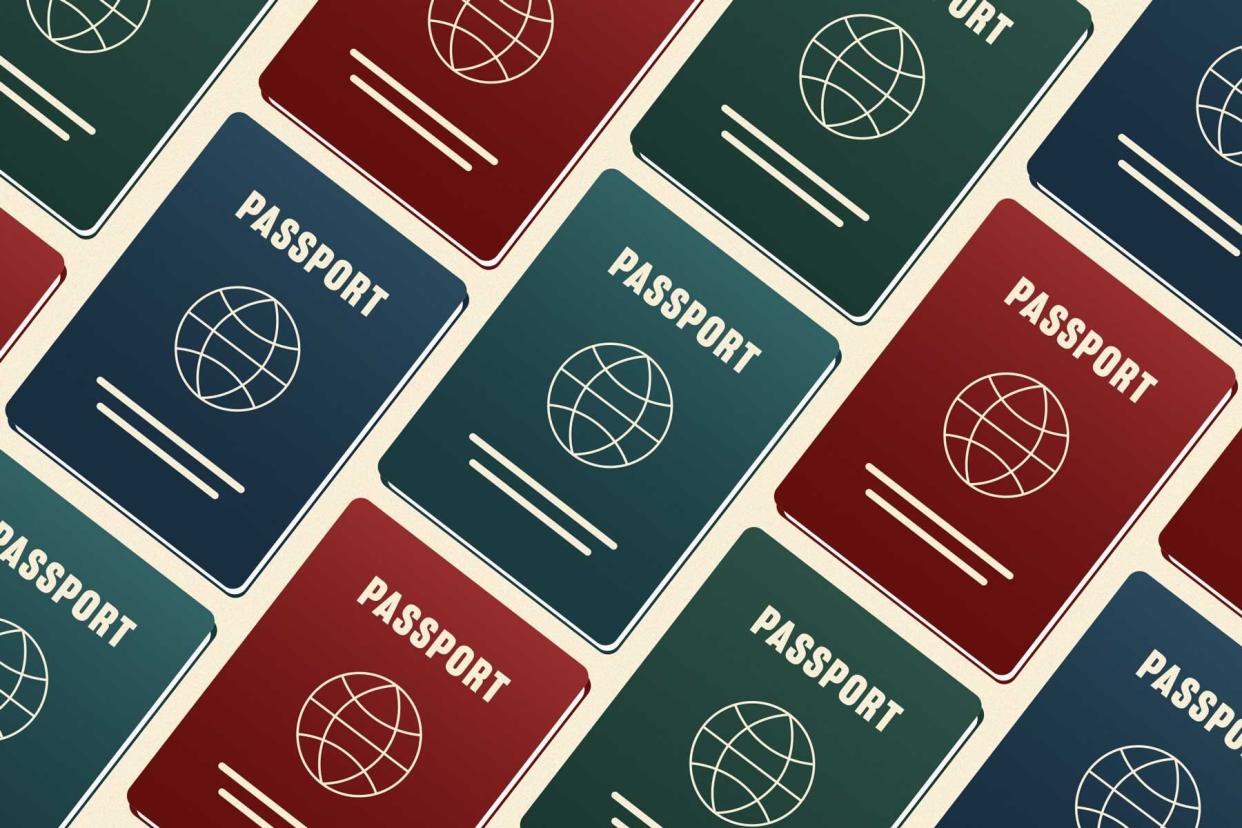How a Country Chooses the Color of a Passport

Mehroz Kapadia
It's often assumed that passport covers can only be made in shades of blue, black, green, and red. And, generally speaking, it's pretty much true that countries opt for these dark, official-looking hues.
But it turns out that there's no official regulation forcing these countries to select primary colors.
"Any color that's in the Pantone book, we can make," William Waldron, vice president of security products at Holliston, LLC, which makes passports for more than 60 countries, told Travel + Leisure.
That means that if the U.S. wanted to print passport covers in the Pantone Color of the Year, 17-3938 (or Very Peri, as it's more commonly known), they could.
Related: How to Check the Status of Your Passport Application
According to the International Civil Aviation Organization (ICAO), passports (or any official machine-readable travel document) must be made of a material that bends, rather than creases. They must also be stable in temperatures between 14 and 122 degrees Fahrenheit, and should remain readable in humidity conditions between 5 and 95%.
There are, however, no stipulations in place that dictate how a passport looks. While the ICAO makes suggestions about the typeface, size, and font, even the details are at the discretion of the issuing state, though they strongly suggest printing information in upper-case characters.
"Nothing stipulates the cover color," confirmed Anthony Philbin, ICAO's chief communications officer.
So, why the global predilection to navy blues, maroons, forest greens, and black? As we've previously discussed, geopolitics and religion certainly come into play when a country determines the color of their passport. Muslim countries, for example, largely prefer green passports, because the shade is so significant to the religion. Meanwhile, Caribbean states typically opt for blue passport covers.
More practical reasons also influence a country's decision to opt for the predictable dark tones: Waldron says they are "generally more official-looking" and "less likely to show dirt and wear."
Mystery, solved.

